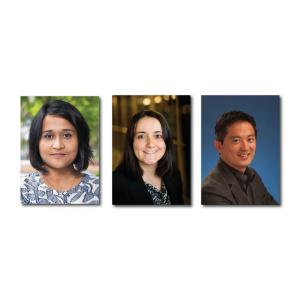
Researchers at the University of California San Diego have developed a new way to record neural activity in the brain by combining macro-scale electrophysiology with micro-scale optical imaging. The combination of the two recording modalities will provide temporal and spatial resolution previously unattained. The new imaging capability could lead to new discoveries on information processing in the brain and circuit dysfunctions for neurological disorders such as epilepsy, depression and memory disorders. The research will be conducted as part of a collaborative research team with Electrical and Computer Science Professors, Piya Pal and Duygu Kuzum together with Neurobiology Professor Takaki Komiyama.
Their work is being funded by a $500,000 award from the National Science Foundation as part of a multidisciplinary project that will support the advancement of neurotechnologies. By integrating innovations in neuroengineering, neuroscience and signal processing, this project, for the first time, will enable the research in neuroscience, medicine, and imaging across disciplines.
"We are very excited about this truly interdisciplinary initiative which has the ambitious goal of mapping neural circuits at unprecedented temporal and spatial resolution (single spike and single cell). To achieve this, we combine two imaging modalities (electrophysiology and optical) that have complementary strengths in terms of spatial and temporal resolutions.”
This project builds on an existing collaboration between Professors Kuzum and Komiyama and introduces new signal processing and sampling techniques developed by Professor Pal to reconstruct super-resolution images of brain activity that underlie important cognitive tasks.
In total, $16 million was awarded to 19 cross-disciplinary teams across the United State. The awards will contribute to NSF’s investments in support of Understanding the Brain and the BRAIN Initiative, a coordinated research effort that seeks to accelerate the development of the brain.
The new projects leverage advanced research to investigate how neural and cognitive systems interact with education, engineering, and computer science, thanks to the support of the NSF Integrative Strategies for Understanding Neural and Cognitive Systems (NCS) program. The NCS program supports innovative, boundary-crossing efforts to push the frontiers of brain science.
It takes insight and courage to tackle these problems,” said Ken Whang, NSF program director in the Computer and Information Science and Engineering Directorate (CISE). “These teams are combining their expertise to try to forge new paths forward on some of the most complex and important challenges of understanding the brain. They are posing problems in new ways, taking intellectual and technical risks that have huge potential payoff.”
Reference:
Makino, H., Ren, C., Liu, H., Kim, A.N., Kondapaneni, N., Liu, X., Kuzum, D. and Komiyama, T., 2017. Transformation of Cortex-wide Emergent Properties during Motor Learning. Neuron, 94(4), pp.880-890.
